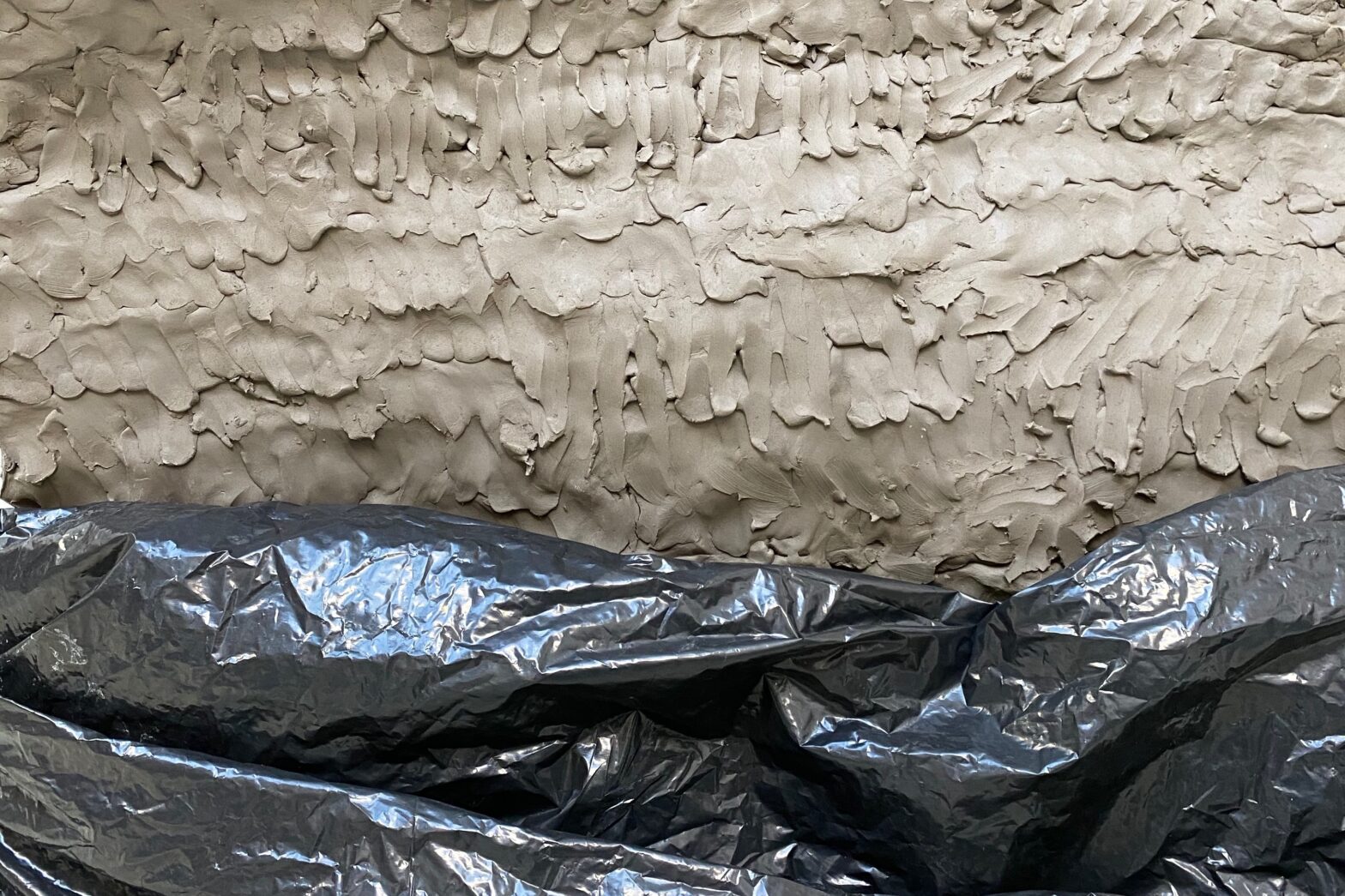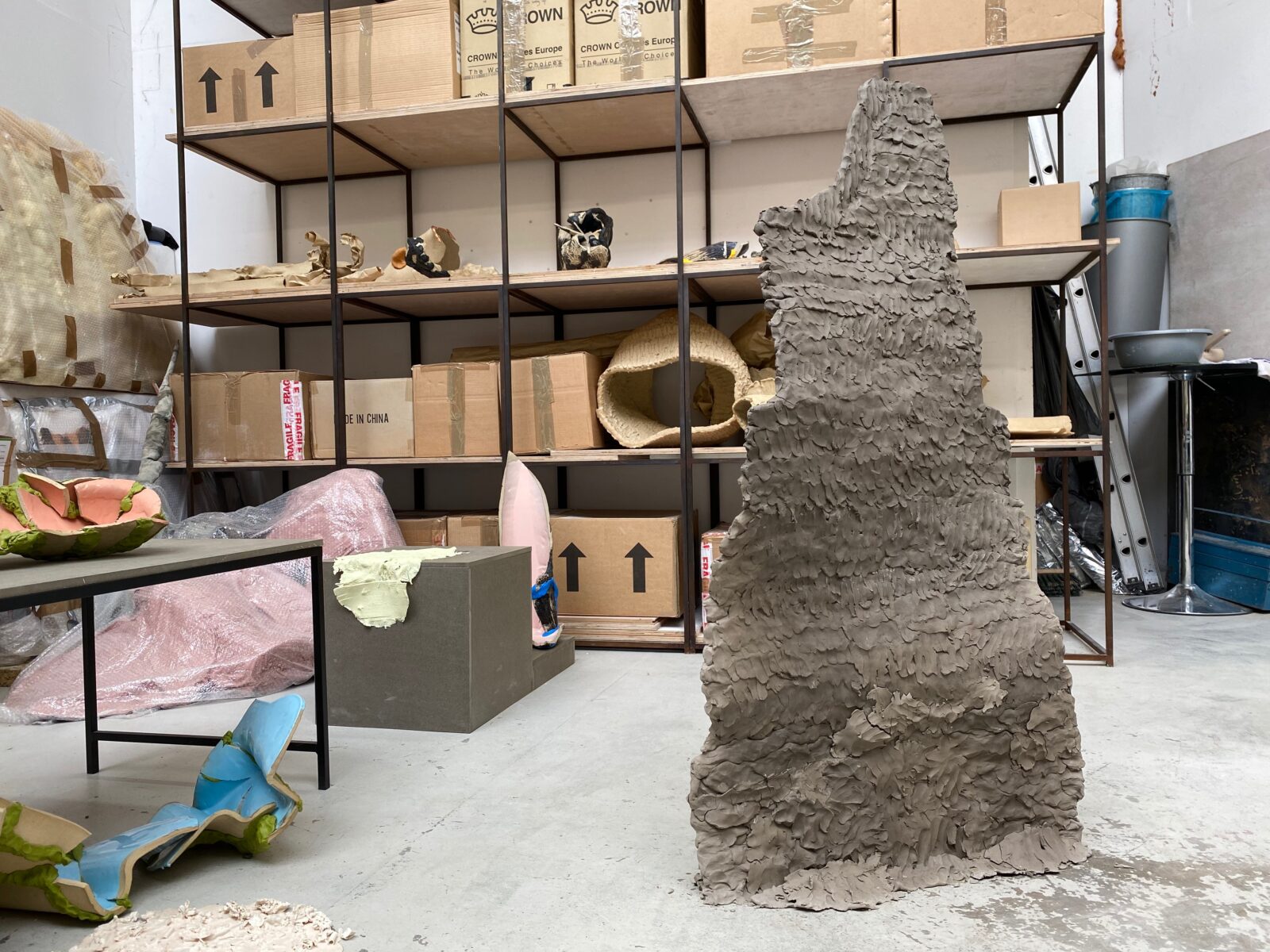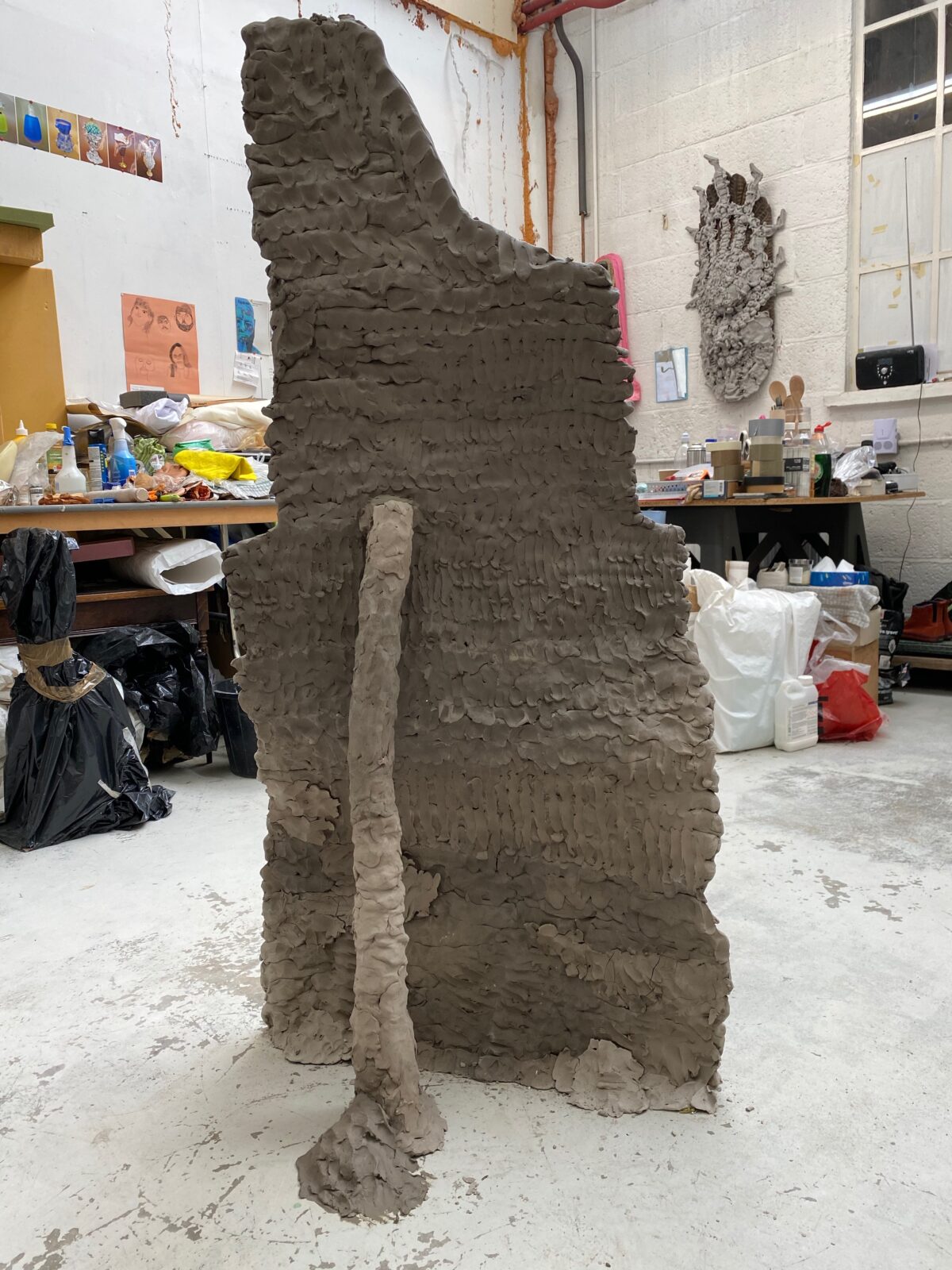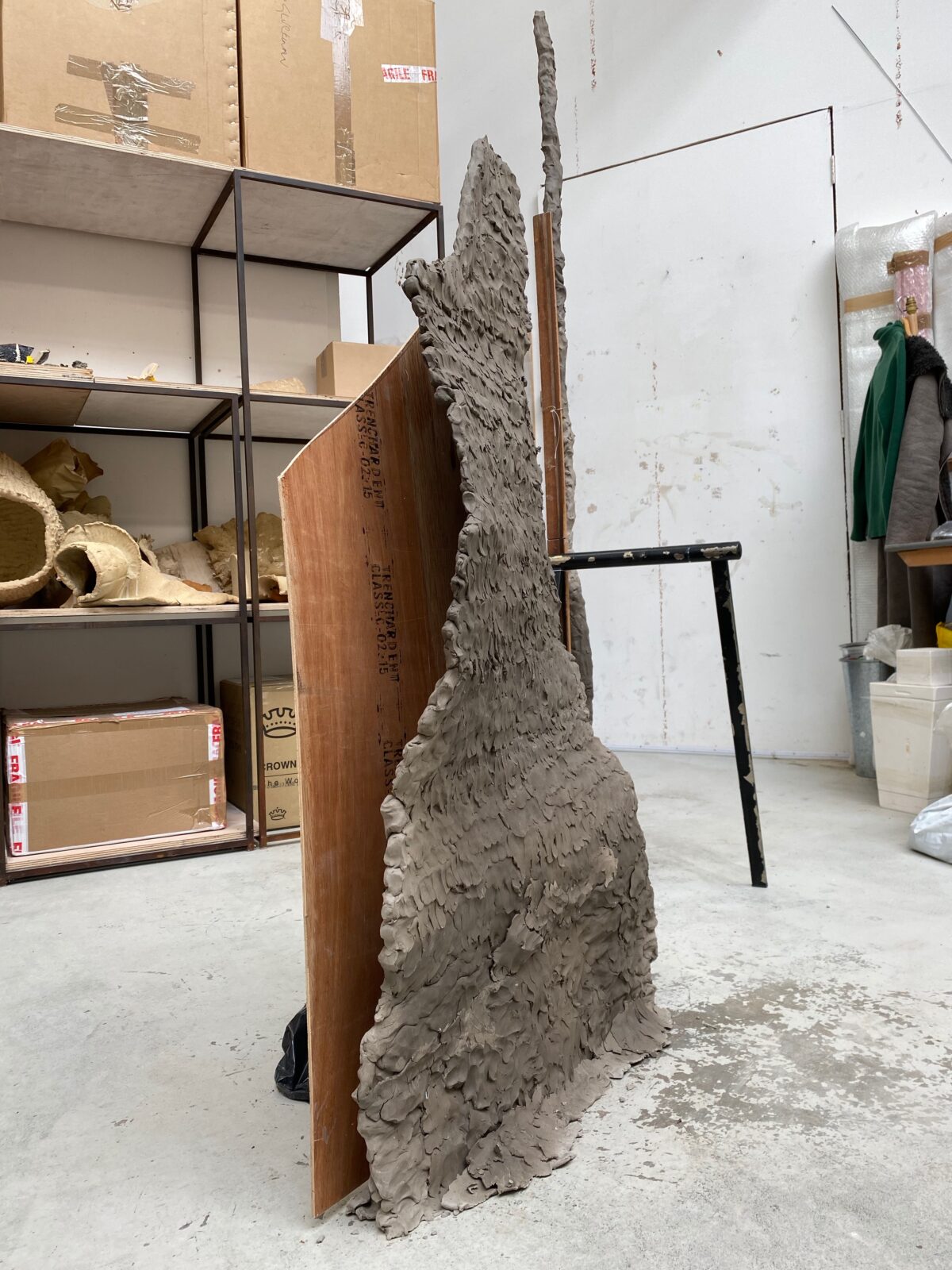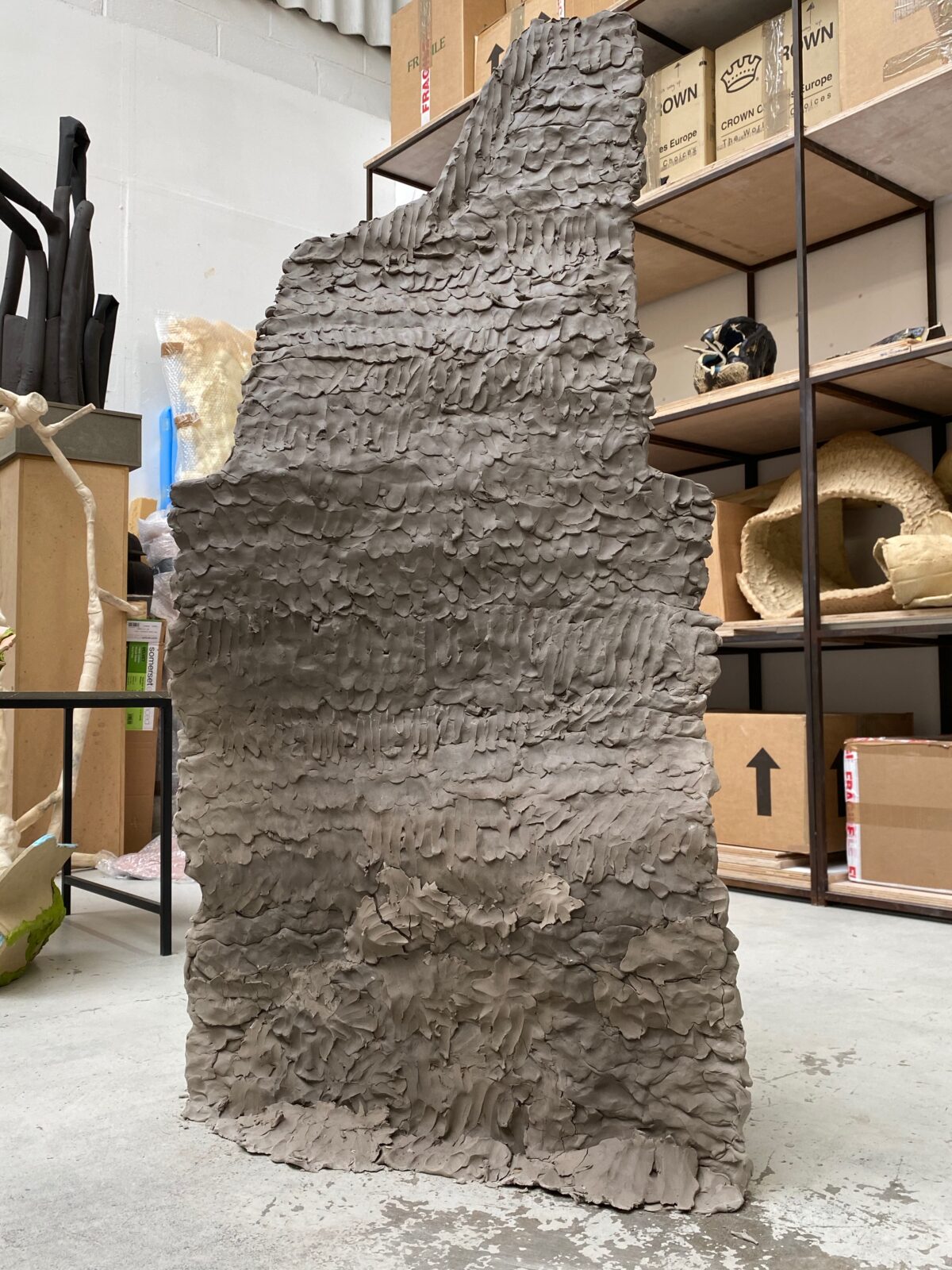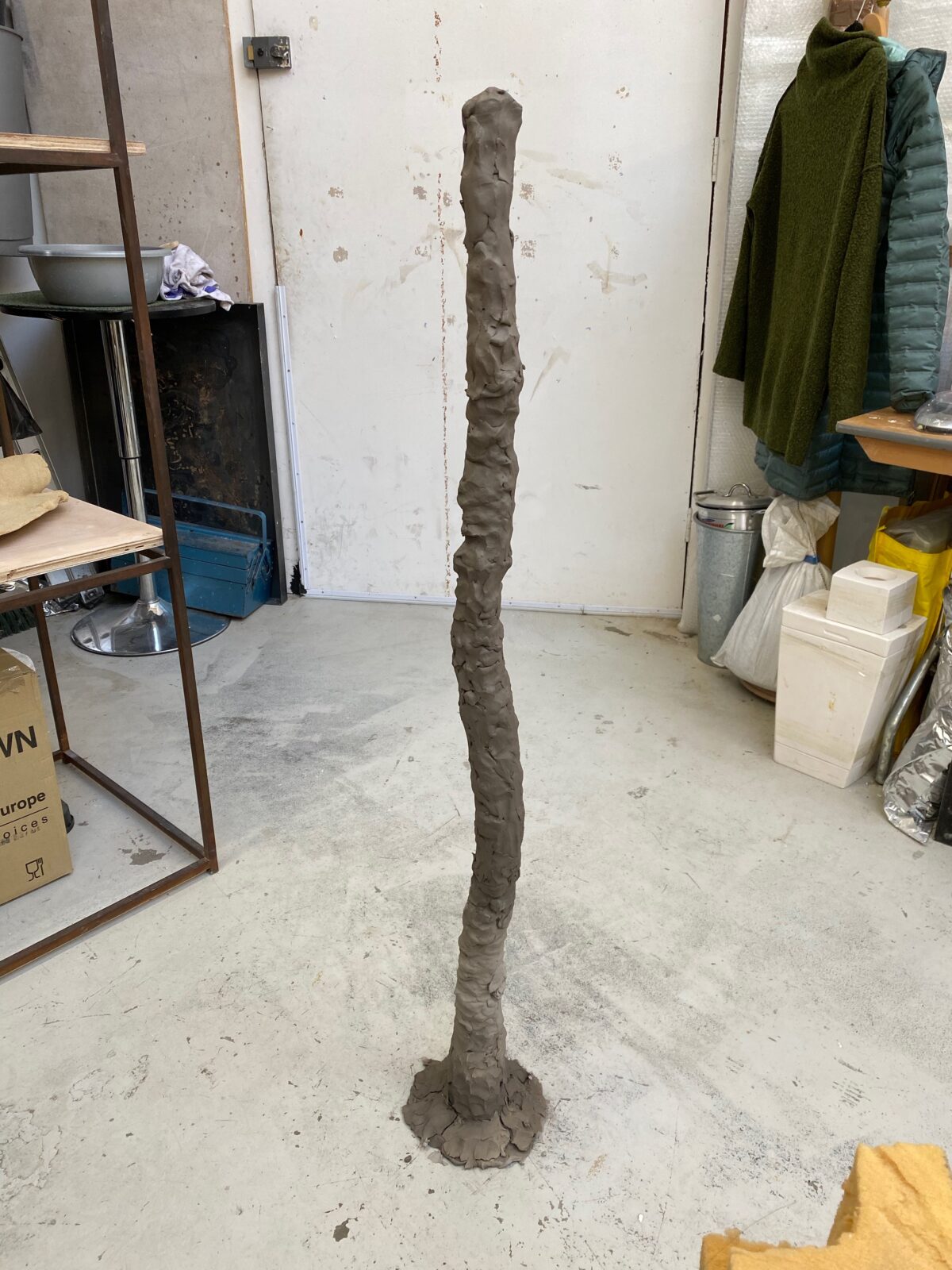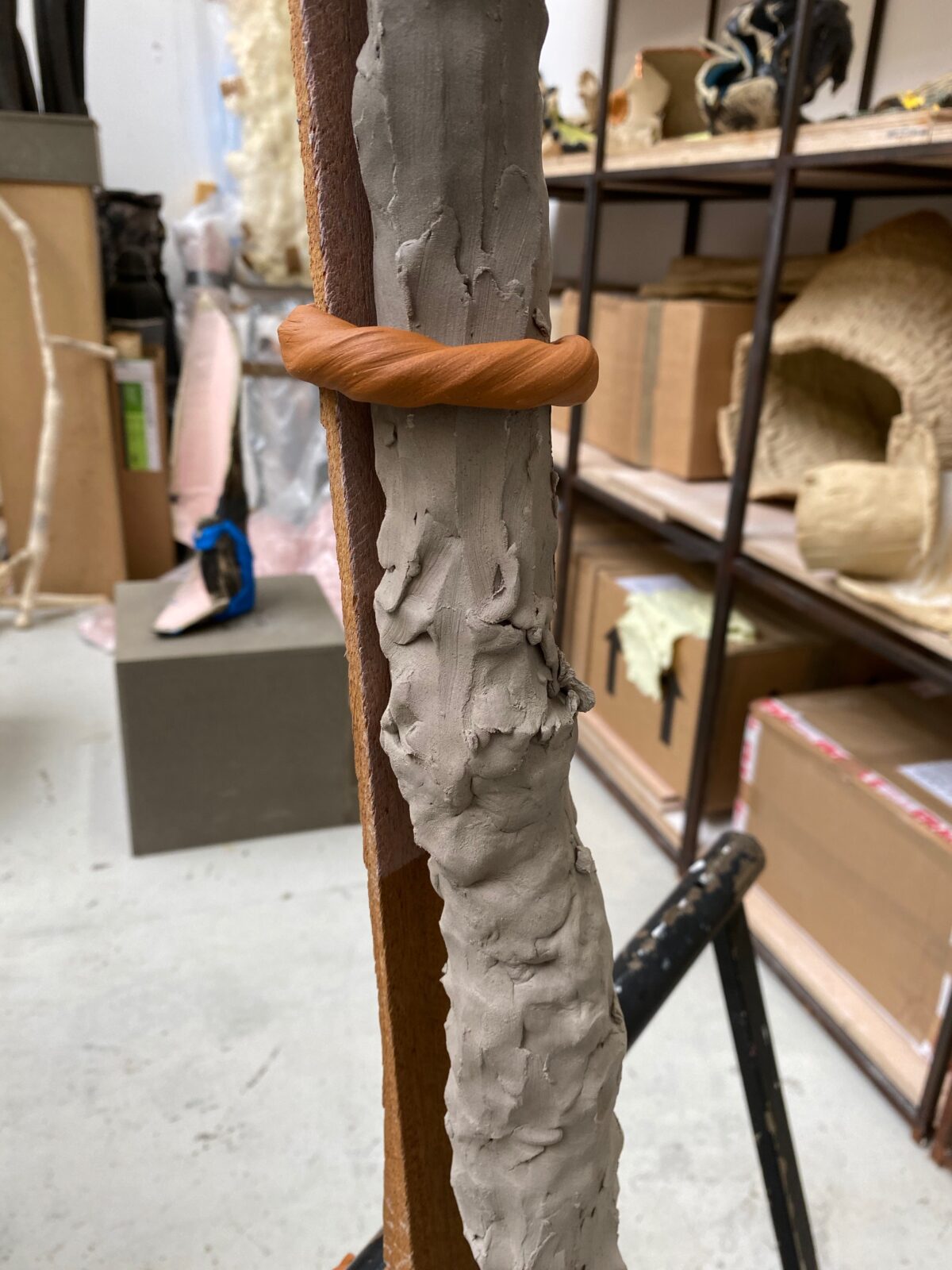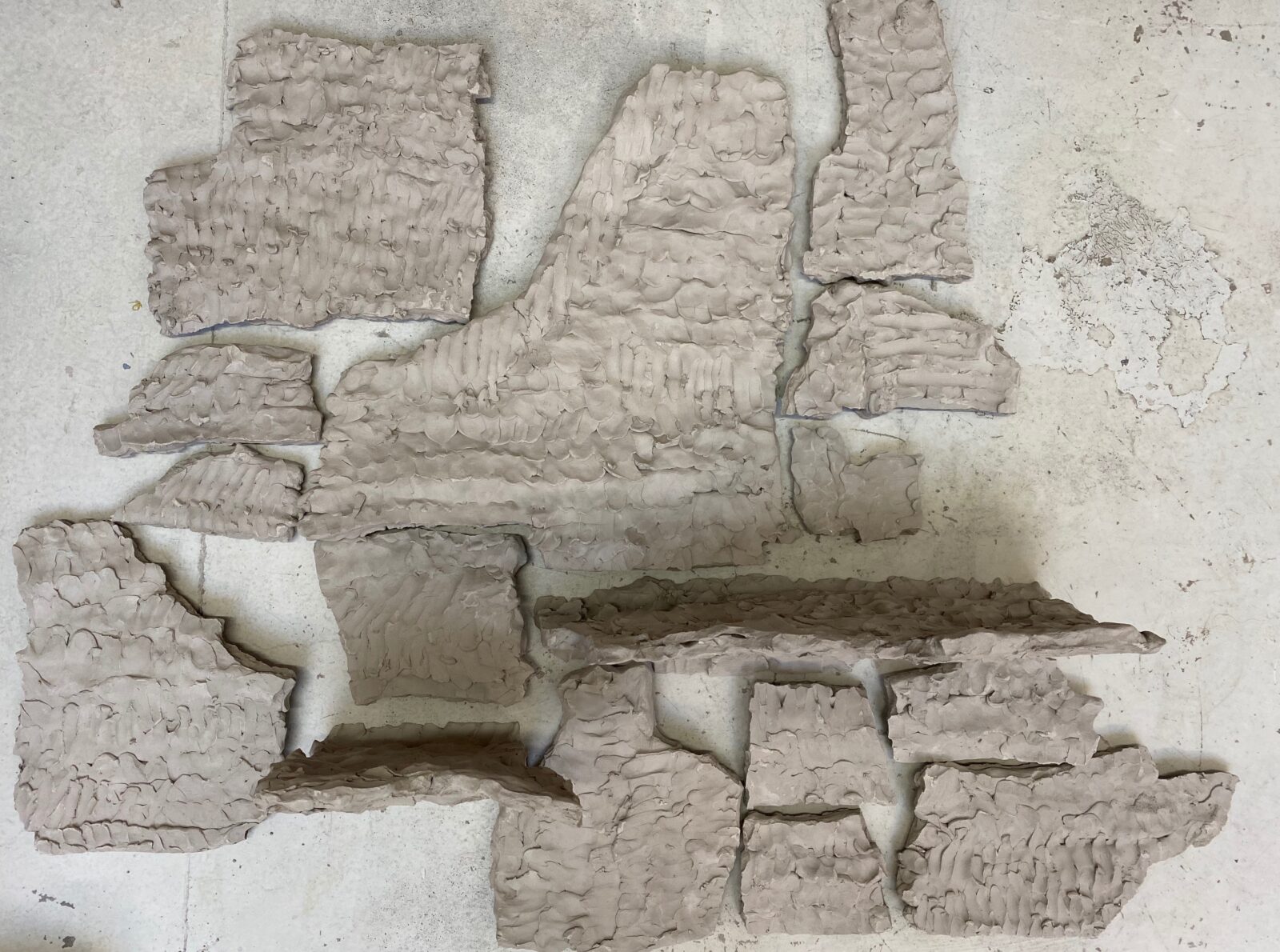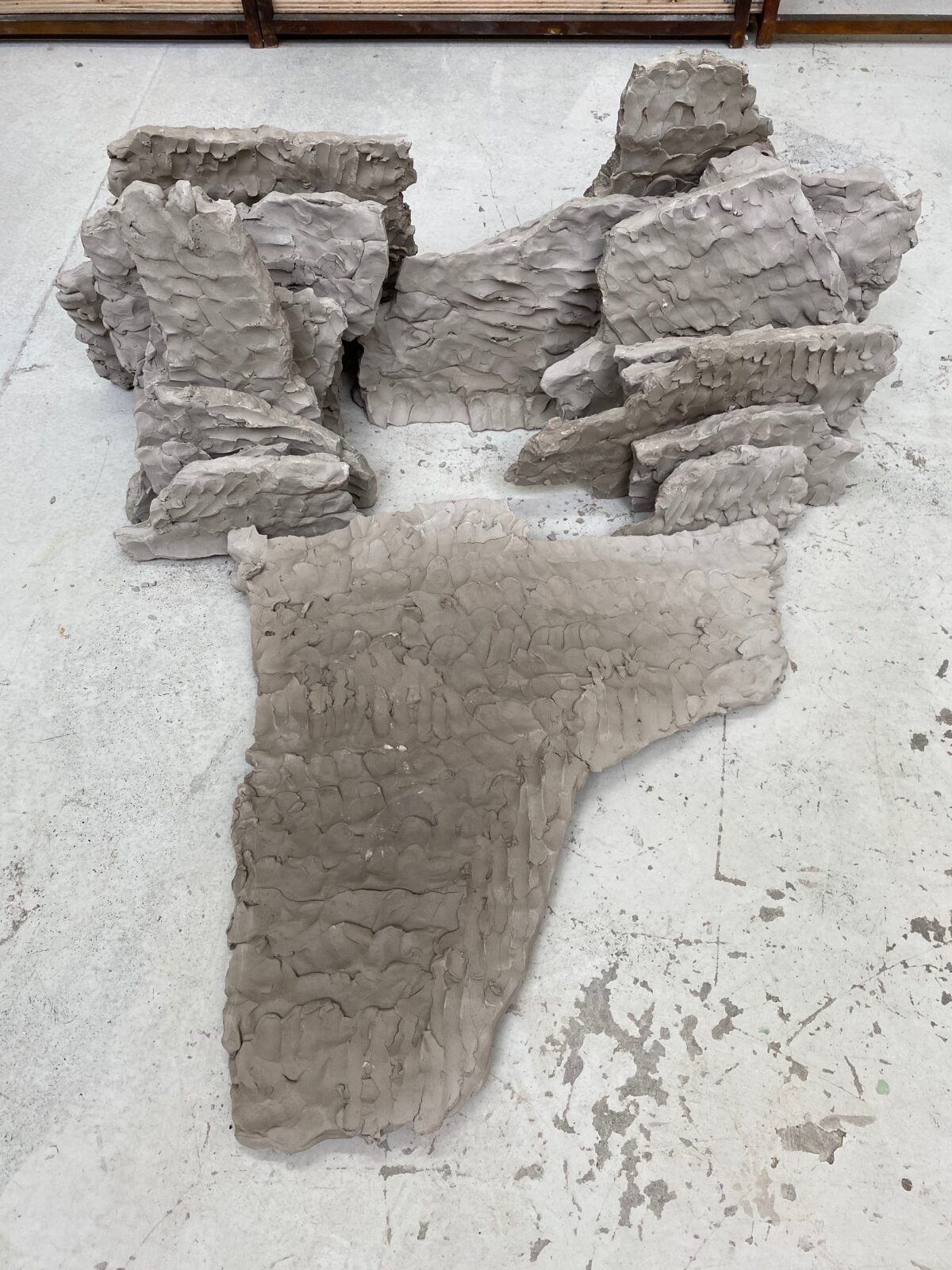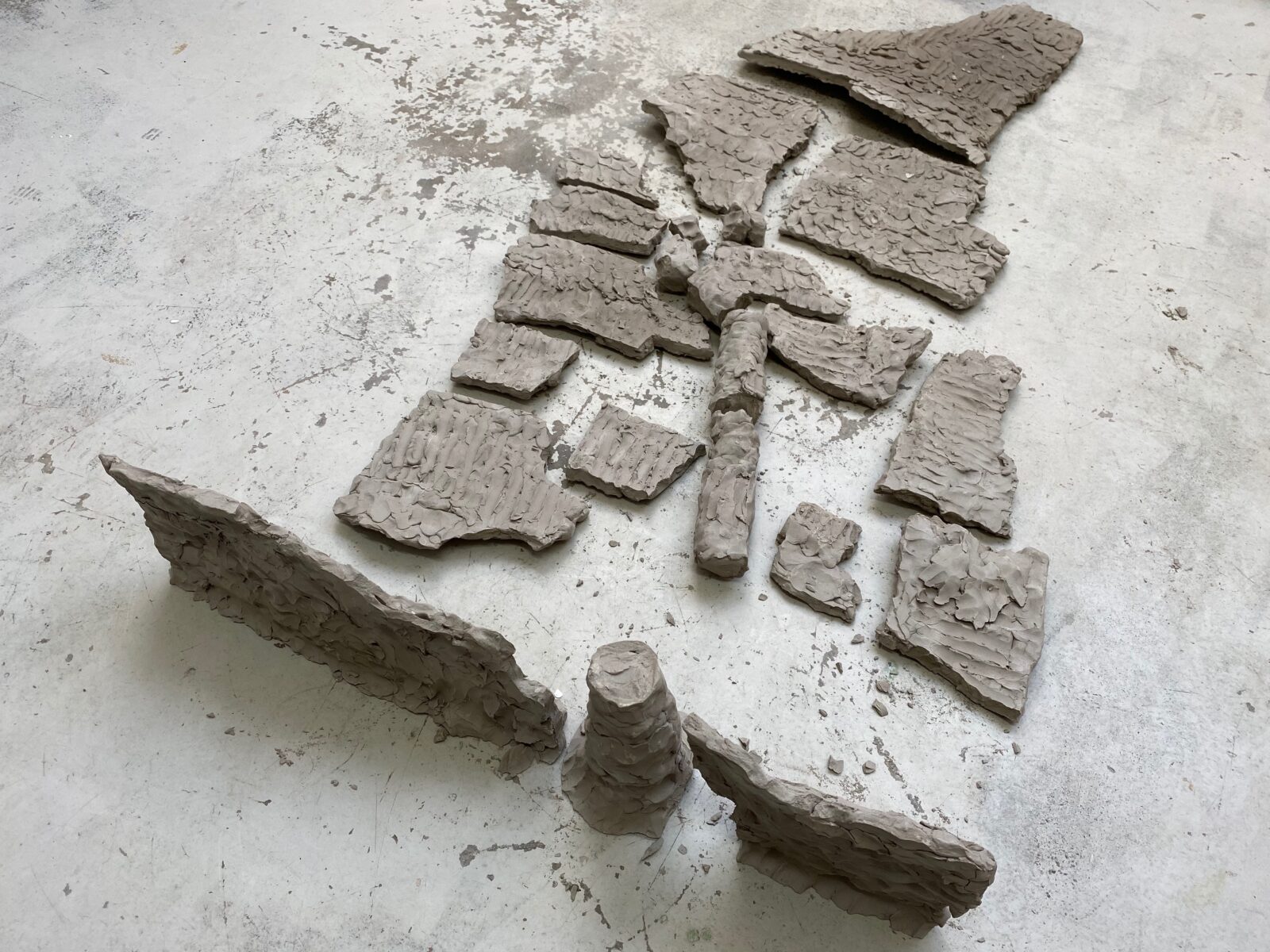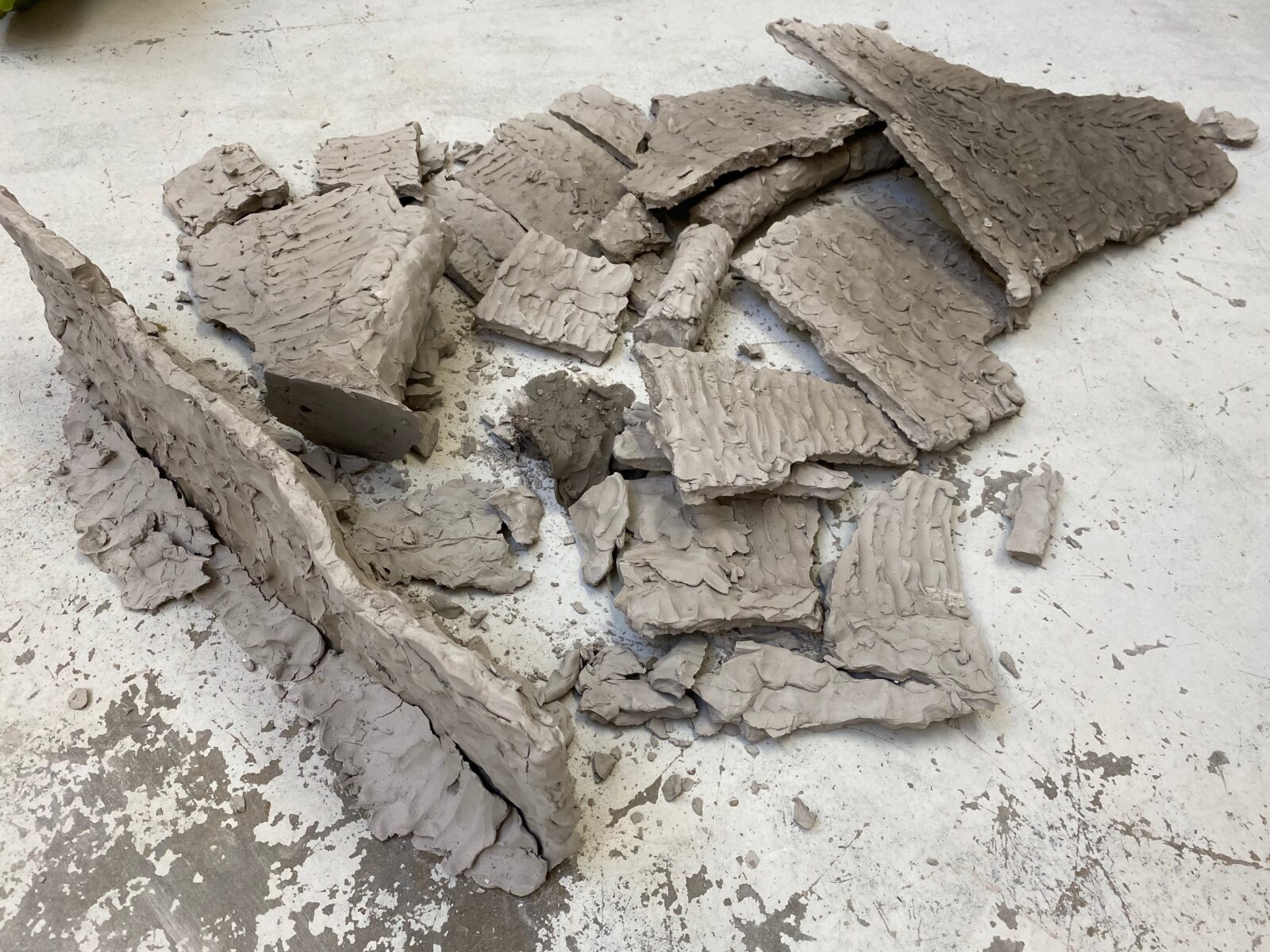Multidisciplinary artist and visiting lecturer for MA Art and Material Histories Laura White writes about her recent material exploration during lockdown: Clay Wall. For more on Laura’s Material Engagements go to www.tenderfoot.co.uk and to see more of her work and writings, including clay based works such as Crushing, Pushing, Breaking go to www.laura-white.co.uk.
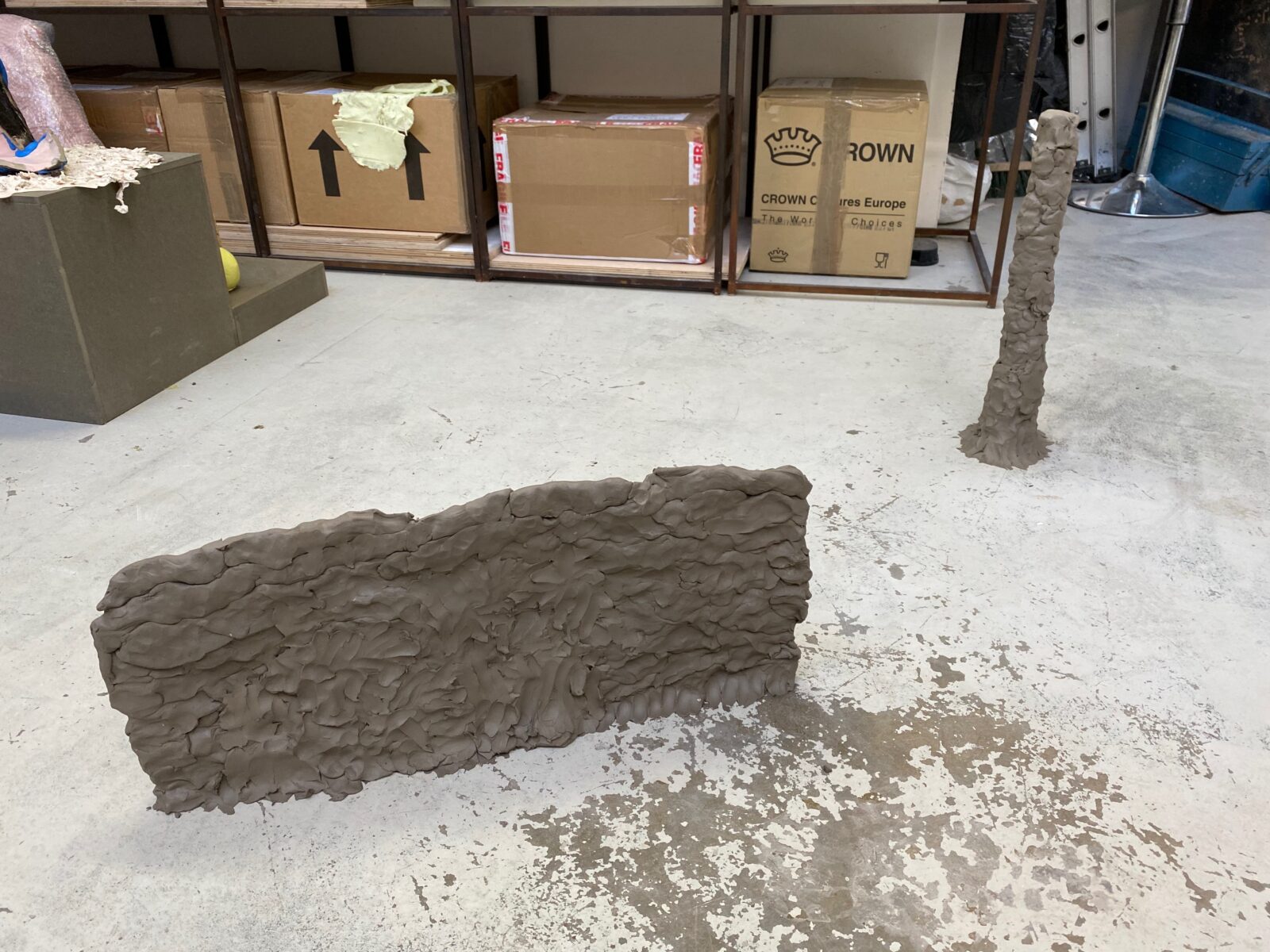
I am using clay to build a wall – an experiment to learn about weigh, mass, drying,
wetness and gravity of this material.
I build the clay wall by layering up with clay coils which I form in my hands, the coils
approximately 2 cm in diameter, each layer joined to the layer below by means of
pressing the clay from the coil above into the coil below and so on. My hope will be
to build the wall as high as 8 foot or more!
As I build my wall up from the floor it is my job to take care of the wall as it grows –
I’m the grower and the caretaker. To build the clay wall up until it can’t take its own
weight and collapses was my first intention. Each layer of clay I add relies on the
layer below to be stable. I can usually add about 5 to 6 layers of coils before this fresh
part of the wall starts to bend and want to fall to one side, then it is time to stop and
wait for this fresh clay to dry a little so it can hold its own shape and for the next
layers to be added.
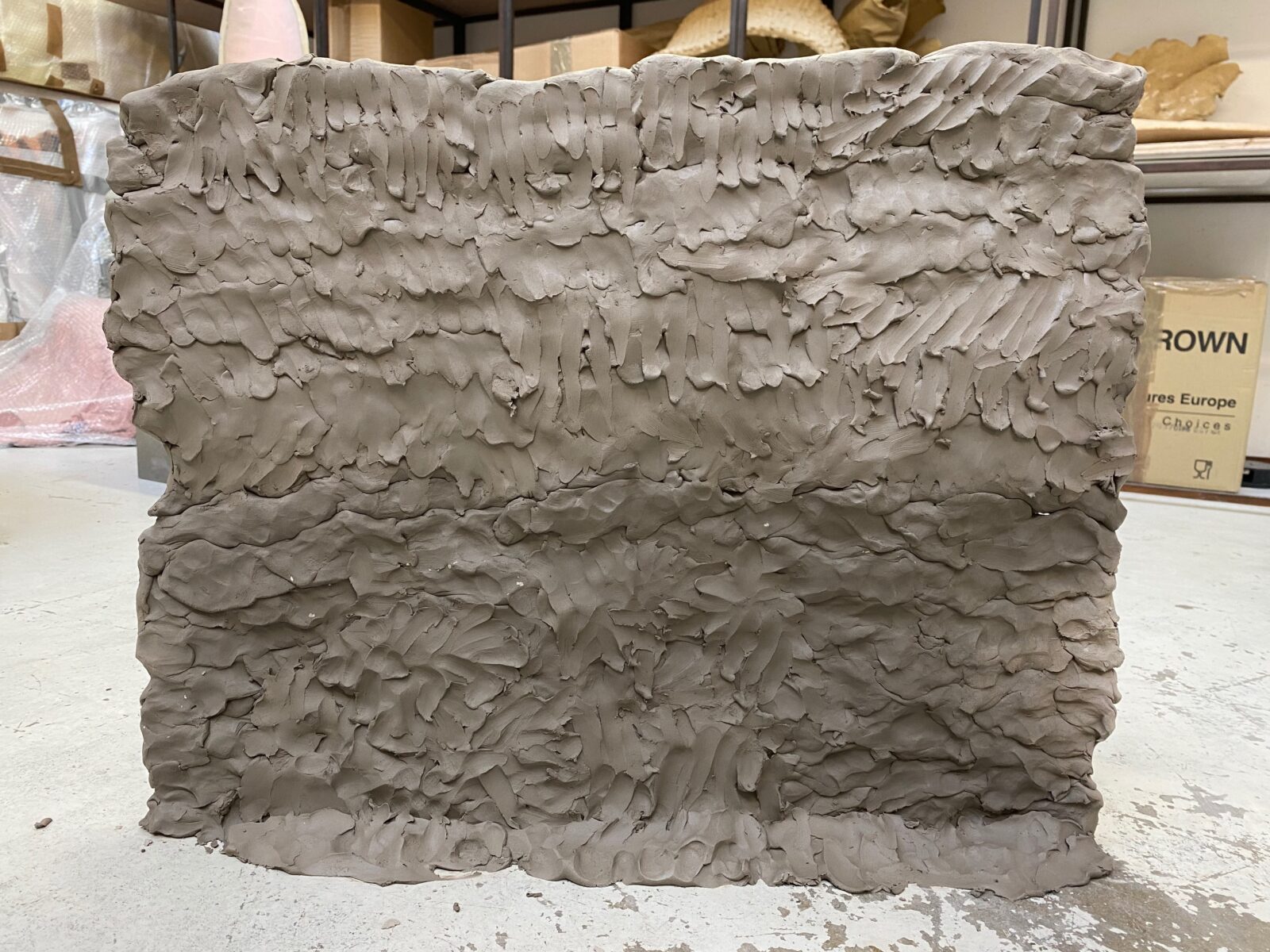
I’m often adding more clay to the base to make it more secure, my fear that if the
base is too narrow is will be more likely to topple over. When I started to build the
wall – the first 2 feet I did not allow the clay to totally dry out, covering it over night
with loose polythene, thinking that a moist leather hard clay is stronger than a dry
clay – the very dry might crack more easily. Now the wall has grown to 70 cm high I
have decided to let the lower part dry out more as I’m now thinking the dry clay might
be stronger than leather hard clay, and as it gets taller will rely on the base being
dryer to hold itself upright. But you know I’m not sure!!! I’m making decisions as I go
along – tangible and visual decisions based on my knowledge of clay and previous
experiences of balancing stuff… The wall is getting higher and I am having to be
more careful when I add layers not to add too much pressure in fear that I will crack
or break it, so I work much slower. This gives me time to enjoy the qualities of the
clay and pay attention to the detailed way my hands are working and moving.
Every day I build the wall to a point where I am confident that the recent layers will
hold themselves up on their own, and I stop and leave to dry a little until the next
day. Sometimes I build up too much, more than 5 layers, and the fresh clay starts to
bend, so I create quick supports around the work – bits of wood, metal and foam
packed around to stop it falling. These temporary structures are placed for as long as
it takes for the clay to dry a bit then I remove the supports. I don’t like doing this as I
prefer to find the materials own point of balance, although I have observed when the
clay starts to dry out it contorts and bends in unpredictable ways that then change
the stability of the wall. Perhaps adding these structures for periods of time will help
to prevent this type of distortion, holding it in a more rigid position.
I find working on this wall everyday very exciting and can’t believe after a week it is
still stranding. I am tempted to build permanent supports around it, such as a
jesmonite wall on one sided, but this may just make it more vulnerable to cracking,
as applying jesmonite to damp clay might inhibit the natural drying process of the
clay, but also it may be more interesting to see this as a clay experiment to see how
high I can go with it – what are the clays limits and my limits! I’m still not sure what I
want from this work and each day when I come into the studio my plan changes. I’m
constantly responding to how the material is behaving, while also seeking my own
rewards from it in the context of my art practice.
Seven days in, after leaving the wall for two days I returned to find that the foam
which I had wedged between the top part of the clay structure and a metal frame had
dropped down to the floor and the wall had leant severely to one side cracking
almost entirely across the lower part. I sat looking at it for a while – was this the end?
To give up and accept an element of defeat. Or to address the situation as just
another part of the process and to make slightly different decisions on how to
proceed. I sprayed water on the crack and added new soft clay while propping it up
with various objects. Then off I go again adding more clay coils to the top. The wall is
no longer an aspiring pure clay form but accepts its dependency on supports from
other materials – a combination of clay, metal and foam.
I tried removing the support from behind the wall when the wall was over a meter
high, but immediately felt that the crack at the bottom was still there, and for all my
attempts to repair it, it was cracking in exactly the same place. Clay has extraordinary memory, making it very difficult to repair a crack/break.
My plans for this wall have changed many times over the two weeks I have been
working on it, decisions made in reaction to the clays behavior alongside exploring
the wall as a sculpture with and without supports. I could carry on building the wall as
high as it can go but I have now taken the supports away from the wall and it has a
singular clay support (like a walking stick or arm) holding it up – so it has gone back
to being an all clay object, and I am now interested to watch and learn what will
happen next – how it will dry out and whether it will collapse on its own. It may never
collapse and then I will break it down myself, a gesture of destruction to re-cycle the
clay back into its original state.
This work was never about creating a stable moment/permanent sculpture, but about
exploring my relationship to the clay and to making a wall from it. I have responded
to what the clay does and will do, and adapted my decisions to accommodate these
qualities. It has required me not to plan and be flexible, and to adapt and be open to
change at every stage. It has challenged my expectations of what a clay wall
sculpture might be, and what this work might communicate to others. It has opened
up questions about what the work is! If and how this process might be exhibited in a
gallery, or whether the process of me with this clay in my studio during these
unprecedented times is EVERYTHING, and there does not need to be anything
else…

